Are you a Quiet Speculation member?
If not, now is a perfect time to join up! Our powerful tools, breaking-news analysis, and exclusive Discord channel will make sure you stay up to date and ahead of the curve.
For a period of time after Shards of Alara block it became very tempting to include many multicolor cards because of all of the strong ones in modern sets. While it is important to have these cards represented in your cube, it's also important to understand their strengths and weaknesses as a whole to judge how they should be utilized. All that's gold does not glitter.
Strengths:
Blocks like Shards of Alara, Ravnica, and Invasion showed us how powerful multicolor cards can be and it's important to have them well-represented in a cube. This is because, on the whole, these multicolor cards offered extremely powerful effects for their cost. While good multicolor cards offer nearly high "bang for the buck", the best multicolor cards accentuate the strengths of the represented two-color pair. I'll illustrate this with a few examples.
When Odyssey was a legal block in standard Psychatog was one of the best parts of it, serving as a cornerstone card in the flagship control deck. Blue-black control decks also love "Dr. Teeth" because he fits the themes of control decks so well. As you may remember from prior SWOT articles, blue-black decks are best represented by control archetypes that seek to neutralize an opponent's threats and winning the game with a big finisher. Although Psychatog may appear to be a small creature, it fits these decks perfectly. This is because it helps the deck to stabilize in the early stages of the game and can easily be deployed in the late game with countermagic backup, similar to finishers like Frost Titan and Kokusho, the Evening Star.
While the two modern finishers are great in these decks, Psychatog is unique in its ability to be deployed as a finisher at an extremely cheap cost. Blue-black decks tend to be able to fuel Psychatog easily since they typically are able to draw cards easily, and can fill the graveyard with additional cards as fuel.
An excellent way to view how well Psychatog fits Dimir decks is to look at the other multicolor Atogs from Odyssey:
- Lithatog
- Phantatog
- Sarcatog
- Thaumatog
All of the other multicolor atogs aren't used in cubes for a good reason: they require devastating one's own board to use effectively and also require the player to significantly change the contents of the deck to enable them, but Psychatog requires no such effort - all that is required is to be playing Islands and Swamps!
A card like Ajani Vengeant, on the other hand, helps Boros by not only accentuating its strengths but also by covering the deck's weaknesses.
As Boros is a deck that seeks to win the game as quickly as possible, Ajani Vengeant contributes to this goal in several ways: its +1 ability disrupts an opponent's mana, making it so that the opponent has a harder time reaching the later stages of the game with an impending one-sided Armageddon threat, while its -2 ability helps the deck to clear opposing creatures that could block the Boros horde.
However, the more important role that Ajani Vengeant provides is that it provides inevitability, an extremely useful tool for aggressive decks in general. Aggressive decks such as Boros can have a difficult time dealing the last points of damage to an opponent and Ajani Vengeant helps to cover this weakness by being a continuous source of damage. After all, a stabilized opponent may have cleared the battlefield of creatures, but that opponent can't stop a Lightning Helix or two once Ajani Vengeant resolves!
Weaknesses:
Due to the fact that multicolor cards require at least two colors to play, their multicolor costs are certainly a drawback that can't be ignored when it comes to card evaluation, as they definitely need to be better than their mono-chromatic counterparts due to their difficult cost.
Like with Psychatog and Ajani Vengeant, I will use an example to illustrate:
Nath of the Gilt-Leaf is a card that ends up not making the cut in many black-green sections of cubes as Nath of the Gilt-Leaf is a card that doesn't compete very well with its competition from green's 5-mana creatures. For example, would you consider Nath to be better than these creatures?
- Deranged Hermit
- Kodama of the North Tree
- Indrik Stomphowler
- Genesis
- Thornling
- Acidic Slime
I certainly don't. Considering the fact that it is harder to cast Nath than almost all of these creatures, Nath loses on that front. But Nath is also suboptimal for the Golgari midrange decks in general. While the deck seeks to win through long-term advantages, the source is relatively fragile and takes a significant amount of time to achieve, making the card not worth running in Golgari decks or sections in general.
The only role that Nath could arguably effectively play is as a control hoser but that claim is quite questionable due to the paragraph above. Even if this point could be argued, is this effect of hosing an archetype really worth the slot in a black-green section? Would a card like Glissa the Traitor provide more of an overall useful effect for the archetype? Likely so.
Some multicolor cards like Ajani Vengeant are easy cards to splash in a deck and thus can be picked pretty highly, but due to the commitment that many multicolor cards require, multicolor cards tend to be later picks. This is especially evident in cubes with a lot of multicolor cards, including the "wedge" cycle of cards like Intet, the Dreamer and Doran, the Siege Tower. Due to the fact that these are relatively weak cards, they are not worth splashing in a deck like Selesnya (for Doran) and Gruul (Intet), making these cards essentially free late picks for decks like 4 and 5 color control.
Of course, the opposite can be said about the hybrid cards such as Murderous Redcap, which can be used in both colors and thus are relatively easy picks. Cards with protection like Silver Knight and Great Sable Stag may make the fact that Murderous Redcap is both red and black a drawback, but for the most part this is a weakness that is overcome by the ease in playing them. Many times, these are included in multicolor sections due to the fact that these cards are optimal in their appropriate pair.
Opportunities and Threats – Usage of Multicolor in Cube:
In this section, I will briefly recap the optimal strategy of the 2-color pairs and how some of the guild's best cards support these archetypes (for example, while something like Boros control may exist, its optimal use is when Boros is used as an aggressive deck.)
Azorius (Blue-White) - Control
- Wall of Denial
- Grand Arbiter Augustin IV
Azorius seeks to play for a long game, neutralizing threats deployed in the early stages of the game and winning the game through a big finisher. While these two powerful cards don't provide much in terms of big finishers or cheap permanent removal, both cards supplement the themes in Azorius. Wall of Denial may not outright remove a creature in combat, but it does, as the flavor text says, gives an Azorius player time to stabilize, which is especially important against decks like Boros and Gruul which seek to win the game by dealing lots of damage with cheap creatures.
Grand Arbiter Augustin IV, on the other hand, helps the deck to be able to deploy its finishers quicker by enabling turns like a turn 5 Sun Titan or Frost Titan and simultaneously delaying the opponent and making it so that the opponent is disrupted by the mana addition clause. Both themes help Azorius decks (although moreso the cost reduction mechanic) and the overall effect provided by the creature's body makes it a very efficient card.
Due to the fact that both of these cards are creatures, they are not very synergistic with the deck's creature mass-removal effects, but the overall effect is strong enough to make their being creatures a non-prohibitive drawback.
Boros (White-Red) - Aggressive
- Ajani Vengeant
- Figure of Destiny
Boros decks seek to use its efficient creatures to deal as much damage in the early parts of the game and keep the opponent off-balance through disruptive cards like Molten Rain and Armageddon. Burn cards like Lightning Bolt and Burst Lightning supplement the deck's theme by acting as a finishing blow.
As Ajani Vengeant was discussed earlier, I won't elaborate further here. Figure of Destiny supports Boros decks by acting in a similar fashion to Ajani Vengeant - providing a useful effect in the early game but also by providing inevitability for the late game. Its ability to become an 8/8 flying and first strike may not happen that often, but its 4/4 ability certainly isn't difficult to achieve for the Boros deck and the efficient creature provides a useful reach element.
Orzhov (White-Black) - Aggressive
- Vindicate
- Desolation Angel
Orzhov aggro decks seek to deal lots of damage in the early stages of the game by attacking with efficient low-cost creatures and using disruptive elements in black (discard) and white (mass land-removal) to win the game.
Vindicate doesn't necessarily shore up any of the deck's weaknesses, it is an extremely useful card for all Orzhov decks due to its flexibility in being able to destroy permanents of all kinds, a trait shared by almost no other cards in cube, and is efficient enough for aggressive decks.
However, the same can't be said of Desolation Angel! Its 7-mana cost can be prohibitive, but its overall effect is extremely efficient. Much like how a red section of a cube shouldn't overload on X-spells and it should certainly use a few if they are efficient enough, Desolation Angel is certainly efficient enough for the Orzhov midrange and control decks, as the angel provides not only a strong body to win the game, but a disruptive element that makes it very hard for an opponent to answer.
Selesnya (White-Green) - Aggressive AND Midrange
- Kitchen Finks
- Qasali Pridemage
Both of the represented cards in Selesnya are used because they are both extremely efficient creatures. Qasali Pridemage's closest monocolor counterpart is something like Viridian Zealot, a card that the Pridemage outclasses by a wide margin. It goes along well with both Selesnya aggro and midrange decks by providing a useful effect and providing a boost to evasive creatures (like Soltari Trooper in Selesnya aggro) or large midrange creatures (like Kodama of the North Tree in Selesnya midrange.)
On the other hand, Kitchen Finks is an incredibly efficient creature that provides 3 power for 3 mana with upsides of lifegain and persist. This is useful because these upsides help to shore up weaknesses in both Selesnya decks: card advantage (with persist) for Selesnya aggro and lifegain to combat opposing aggro decks for Selesnya midrange.
Dimir (Blue-Black) - Control
- Psychatog
- Shadowmage Infiltrator
Dimir control decks work similarly to Azorius control decks, winning the game through stabilization of threats and large finishing creatures. Much like with Ajani Vengeant, since Psychatog was already covered I won't do so here.
Shadowmage Infiltrator, on the other hand, is a very useful tool for Dimir decks since it helps to give strength to one of the deck's strengths: card advantage at a consistent rate as fear is a powerful evasive tool. It is important to note that even though blue already has similar creatures like Thieving Magpie and Lu Xun, Scholar General, Shadowmage Infiltrator is great in Dimir decks due to its reduced mana cost, making Finkel better than the blue creatures.
Izzet (Blue-Red) - Control
- Prophetic Bolt
- Fire/Ice
Izzet control decks are able to combine blue affinity for card advantage and late-game strength with red's removal suite (including mass-removal) to create an extremely powerful archetype.
Both of these cards support the goals of Izzet decks extremely well since both cards are able to utilize two vital strengths of Izzet: card advantage and burn. Most of the time these cards will be used to destroy a creature and to draw a card, but they certainly can be used to finish off an opponent if need be. However, their ability to destroy a creature with no card cost makes these cards extremely usefuls. Prophetic Bolt especially so since it combines two powerful cards in the Izzet colors: Char/Psionic Blast (without the self-damage) and Impulse!
Simic (Blue-Green) - Midrange
- Simic Sky Swallower
- Mystic Snake
Simic midrange decks use blue's countermagic as more of a protective measure to protect efficient green creatures and also to serve as card advantage for the deck.
Mystic Snake supports the Simic midrange deck extremely effectively by aligning with the deck's basic game plan of using efficient creatures backed up by countermagic to win the game. While a 4 mana 2/2 certainly isn't efficient on the scale of creatures like Thrun, the Last Troll, its ability to protect other creatures (and you from generally problematic spells) while providing a body is a very useful tool that is synergistic with the Simic gameplan.
Simic Sky Swallower may be more at home in control decks, but much like Desolation Angel, the role is performed extremely efficiently since it provides a relatively efficient body while giving itself shroud, making it nearly impossible to deal with aside from mass removal.
Golgari (Black-Green) - Midrange
- Pernicious Deed
- Maelstrom Pulse
"The Rock," the classic midrange deck effectively uses green's midrange mana acceleration and card advantage to combine with black's card advantage mechanisms to win a game on the back of the deck's many 2-for-1s.
Pernicious Deed certainly aligns with this goal as it isn't uncommon for the mass-removal card to generate card advantage for the Golgari player while dealing with annoying aggro creatures and late game finishers alike (especially those with shroud like Simic Sky Swallower.) As Pernicious Deed is an extremely efficient card at providing mass removal, it certainly earned its reputation as one of the best multicolor cards of all time.
Maelstrom Pulse also goes well with the Golgari midrange deck by providing a flexible pinpoint removal spell. Despite the fact that it doesn't provide a 2-for-1 like many of the cards in Golgari decks, the flexibility and efficiency make it a very useful card.
Rakdos (Black-Red) - Aggressive
- Terminate
- Murderous Redcap
Efficient creatures in both black and red are given redundancy through the other color and this redundancy combines to create a very efficient aggressive deck that can win in a short manner.
While Terminate doesn't do anything particularly unique for the deck, it allows Rakdos to deal with creatures such as Grave Titan and Kokusho (black creatures with 5 or more toughness) which can be problematic for the deck to destroy, due to black's cards like Terror and red's difficulty in destroying creatures with 5 or more toughness. Much like with Vindicate, the overall efficiency of the card makes it very useful for the Rakdos deck.
Murderous Redcap, on the other hand, helps to provide inevitability through its persist (although nowhere on the scale of cards like Ajani Vengeant.) Its overall effect is very efficient but it is also especially nice since it can damage players, a trait shared by few other "enters the battlefield" creatures.
Gruul (Red-Green) - Aggressive
- Bloodbraid Elf
- Stormbind
Finally, Gruul decks work similarly to Rakdos decks by using its redundancy in green and red to win the game through a fast creature swarm backed up by disruptive elements in artifact, land, and creature destruction.
Bloodbraid Elf rightfully earned its reputation as an extremely powerful card in Jund decks by being a relatively solid creature in addition to giving the caster a free spell, and this transfers over to cube as well. Gruul decks typically utilize the cascade trigger well by having burn spells, like Char, or additional creatures, like Tarmogoyf, become free riders onto the 3/2 haste.
Stormbind is a card that I find tends to be underrated in cube but it is an extremely useful tool for Gruul aggro decks since it, like Ajani Goldmane, provides inevitability to win the game once the opponent is "in burn range." Discarding cards to deal the critical last points of burn to win the game is a powerful back-up plan of converting one resource (the hand) into a more valuable one for Gruul decks (extra damage and reach). By doing so at an efficient mana cost and using a drawback that is extremely friendly for Gruul decks, Stormbind is a very powerful card.
These examples highlight what essentially make for powerful multicolor cards - the ability to bolster strengths and cover weaknesses in the archetype in an extremely efficient and powerful manner. While some cards like Desolation Angel may not align with the optimal strategy, they certainly bring unique and very powerful effects to the table.
This concludes the multicolor SWOT analysis. While I have covered cards that may be apparent to seasoned cube veterans like Bloodbraid Elf, the overall lesson to be learned is to use a careful eye when examining multicolor cards. It can be very tempting to put together a lot of multicolor cards in a cube because they have splashy and powerful effects, but it is important to understand that this power comes at a cost and having too many multicolor cards can be detrimental to the overall health of a cube. Effectively mitigating these drawbacks is essential for a well-balanced cube and I hope that this article has given you some lessons in doing so.
In my final Cube SWOT article, I'll be discussing the role of artifacts in cube from a SWOT point of view and how to utilize them effectively in cube.
Thanks for reading!
@UsmanTheRad on Twitter.
idratherbecubing.wordpress.com - my cube blog with my various cube lists.
The Third Power – a cube podcast that Anthony Avitollo and I co-host.


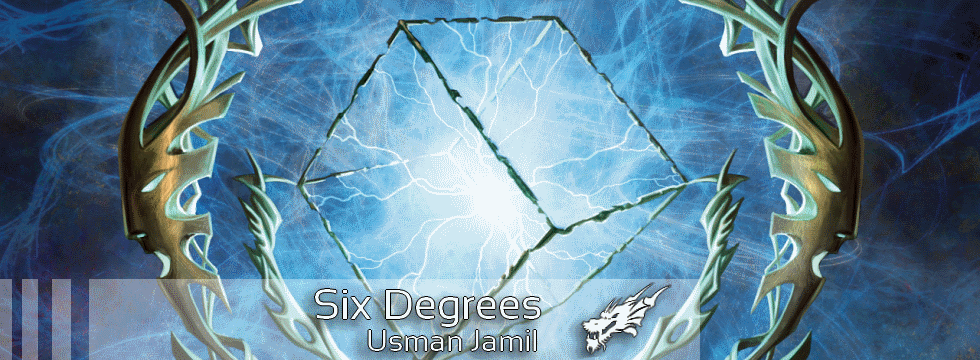
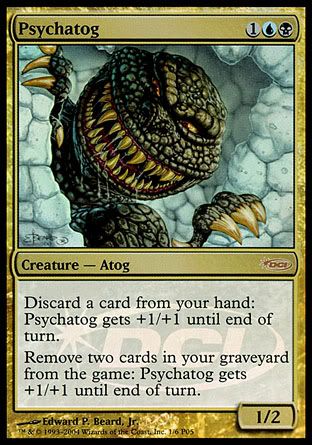
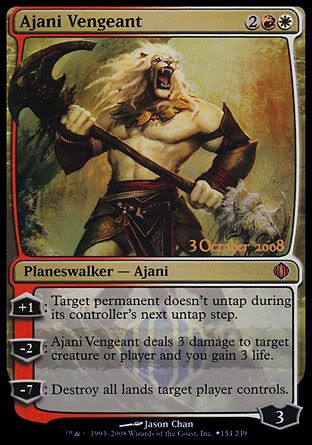
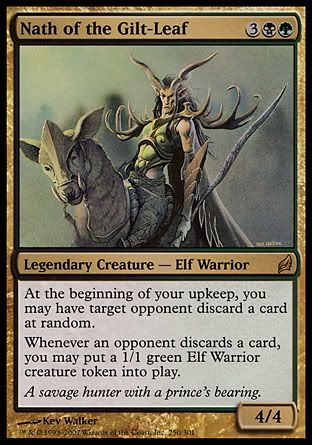
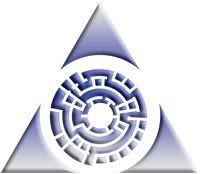

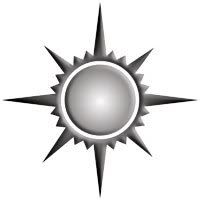
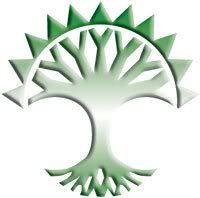

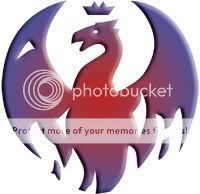
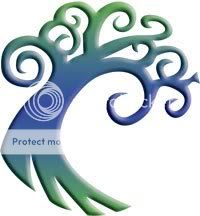
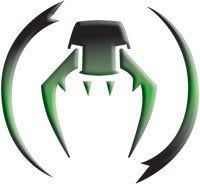
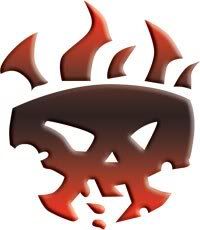
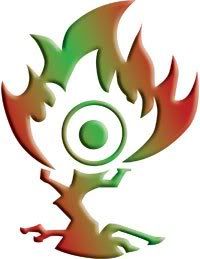



Dude, epic. Trying to get into cube, and this is so sweet. i love this series.
Did you really call aggro decks a weakness for GW midrange? I find that suspect, GW decks are usually the last thing I want to face with an aggressive deck.